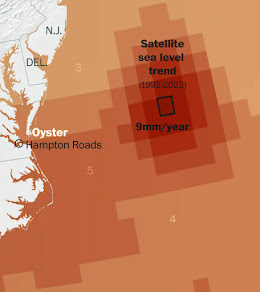By Vivian Schiller and Bonita Robertson-Hardy
The Aspen Institute
In late October 2022, two weeks before Election Day, voters in Iowa woke up to the
Iowa Catholic Tribune in their mailbox.
Under the masthead read “Real data. Real value. Real news.” But the Iowa Catholic Tribune was not a real newspaper from the
Catholic Diocese of Des Moines, as some voters thought at first glance. In fact, it was not a newspaper at all. It was the product of Metric Media, a conservative organization that produces countless fake news publications like the Iowa Catholic Tribune around the country.
 |
| Image, with address redacted, from BleedingHeartlaand.com |
The front page articles warned of teachers pushing books in schools about “child sexualization” and assailed Iowa Attorney General Tom Miller and U.S. Rep. Cindy Axne, two Democrats embroiled in competitive campaigns, on their records in office. Both ended up narrowly losing reelection.
Similar newspapers popped up in other battleground states and sowed confusion among voters. In Arizona, Nevada, Pennsylvania, Michigan and Iowa, Catholic organizations
rushed to make clear that they were not publications from the Catholic Church.
"Pink slime," partisan propaganda masquerading as legitimate news outlets, is proliferating around the United States. Driven by ideologically motivated operatives, pink slime exploits our flailing trust in media for political gain. Private Facebook groups and other social media then amplify the false claims, filling the gap of reliable information with websites that often walk a fine line between something resembling reality and conspiracy theory.
Pink slime worsens our trust in information and poisons our democracy. While we know independent fact-based local news is its antidote, it is unfortunately in shorter supply. In the last two decades, 25 percent of all newspapers
have shuttered, and one in five Americans live in a “news desert” with little access to reliable local news. Nowhere is this more pronounced than in rural America.
News deserts, pink slime and social media all contribute to a growing crisis of trust – in each other, in institutions and especially in journalism. Last month, a
Gallup poll found that only
a third of Americans trust the mass media to report the news “fully, accurately and fairly.” Confidence in newspapers and television news
has fallen to record lows. This is even more pronounced in rural areas, where
57 percent say that when they do receive local news, whether on television or online, it does not cover where they live.
Rural communities have suffered the most from these trends. While national news organizations have made earnest attempts to fill the void in stories covering rural America, they often fall flat and report on these communities as if the reporters ventured into a foreign land. The 2016 presidential election was the prime example. After Donald Trump was declared the victor, national reporters swarmed small towns hunting for the “missing” voters who eluded their coverage. But according to
a study from the
Aspen Institute’s Community Strategies Group, their well-intentioned overcorrection exacerbated existing distrust between rural communities and the national news.
The researchers found that when national reporters reached out to rural journalists and community leaders to write on politics and rural life after the election, they often sought preconceived avatars to feature in their coverage, like the “out-of-work coal miner” or “the Trump voters who regretted their decision.” Even when local voices tried to push them in a more authentic and nuanced direction, the national media kept coming back to these narrow identities to advance a reductive, pre-baked narrative.
Quick-turnaround “parachute journalism” like this earned the skepticism that rural people have toward national news media. Without a robust local news source or trust in national reporters, pink slime often finds a more receptive audience in these communities online.
We need to change course. For the sake of democracy, we must all prioritize restoring a robust local media that serves the needs of every community – and all of those communities’ citizens, especially Black, brown, and indigenous people. There is no silver bullet, and this will need to be a long-term effort. As the Aspen Institute’s
Commission on Information Disorder found, the solutions must come from every sector of society.
Promising initiatives are budding around the country, but we need more of them. Philanthropy-fueled initiatives like
Report for America and the
American Journalism Project can help rebuild newsrooms. Civic and media literacy courses led by schools and libraries can prepare the next generation to decipher fact from fiction. Communities that have seen their news downsized can collaborate to establish nonprofit outlets as the
Ohio Local Information Initiative has. Businesses can fund and sustain these efforts at the local level. National media organizations can partner with homegrown news efforts to tell national stories from the local perspective, as public radio often does.
Most importantly, we need local news written by people from the community, for the community.
Our ability to solve the biggest societal challenges, and the very preservation of democracy, is predicated on our ability to rebuild a news ecosystem that earns our trust. Each of us has a role to play, and we urge everyone to work with your neighbors to build your own community-driven solution to it.
Vivian Schiller is executive director of Aspen Digital, the Aspen Institute project aimed at empowering policymakers, civic organizations, companies, and the public to be responsible stewards of technology and media in the service of an informed, just, and equitable world. Schiller has been president and CEO of NPR, global chair of news at Twitter, general manager of NYTimes.com and chief digital officer of NBC News. Bonita A. Robertson-Hardy is co-executive director of the Aspen Institute’s Community Strategies Group.











.jpg)









